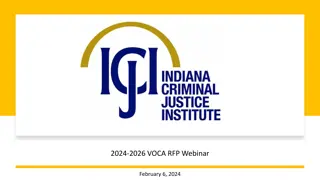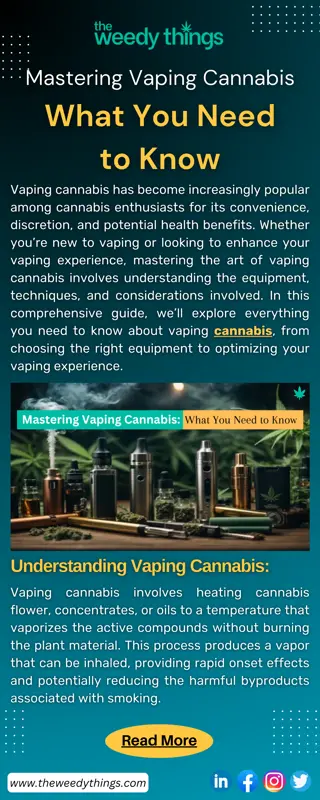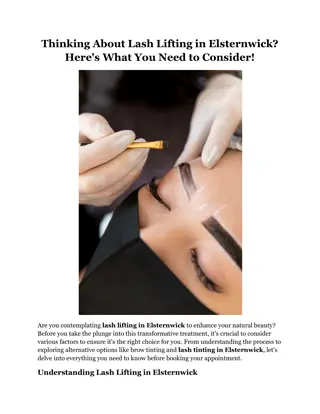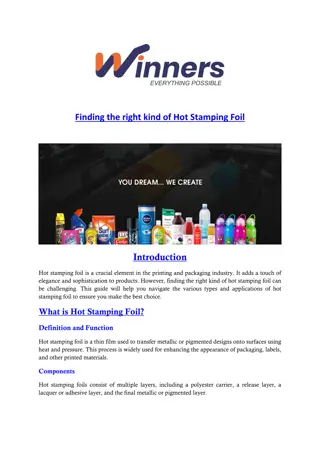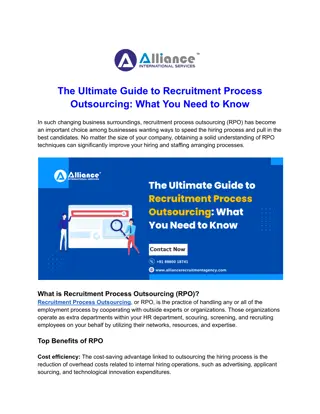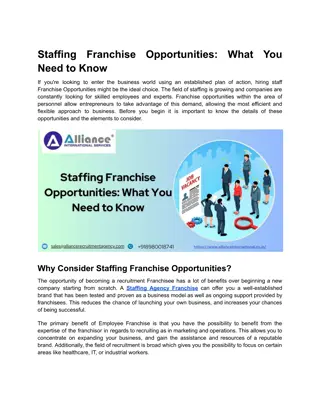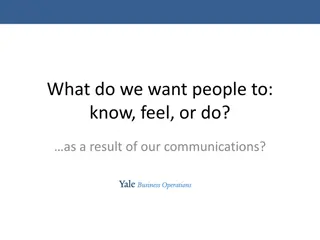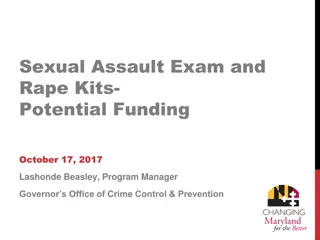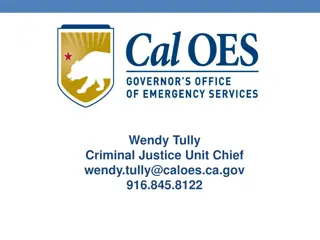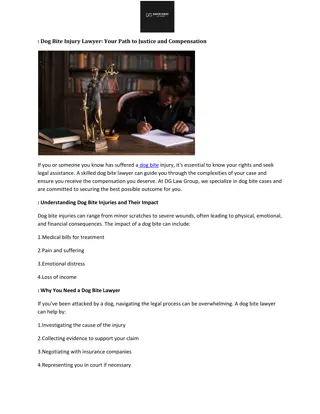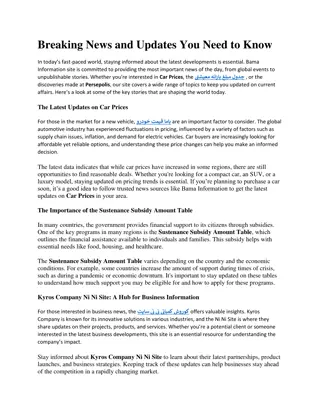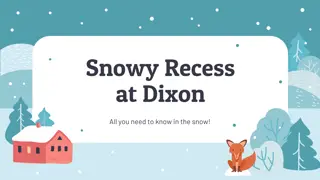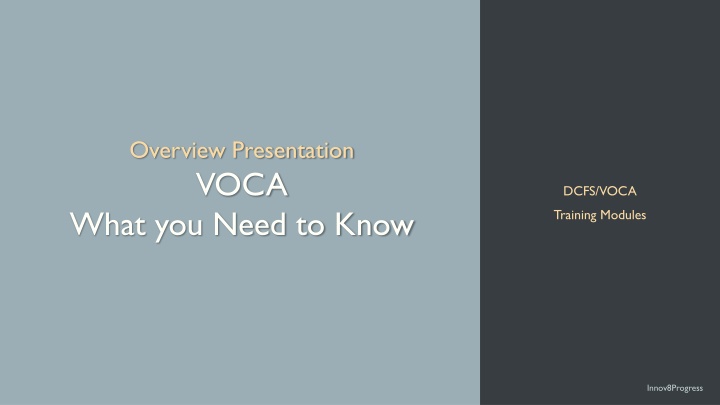
VOCA What you Need to Know
Learn about the eligibility criteria for DCFS/VOCA Assistance Grants, including the requirements, compliance measures, and funding conditions to support victim service organizations.
Uploaded on | 0 Views
Download Presentation

Please find below an Image/Link to download the presentation.
The content on the website is provided AS IS for your information and personal use only. It may not be sold, licensed, or shared on other websites without obtaining consent from the author. If you encounter any issues during the download, it is possible that the publisher has removed the file from their server.
You are allowed to download the files provided on this website for personal or commercial use, subject to the condition that they are used lawfully. All files are the property of their respective owners.
The content on the website is provided AS IS for your information and personal use only. It may not be sold, licensed, or shared on other websites without obtaining consent from the author.
E N D
Presentation Transcript
Overview Presentation VOCA What you Need to Know DCFS/VOCA Training Modules Innov8Progress
WHAT TO EXPECT VOCA 101 RFP 101 Developing a Scope of Work Partnerships and Collaboration Quality and Compliance Evaluation Building a Relationship with DCFS What Does Success Look Like? The Future of VOCA Questions
WHAT IS VOCA? What is VOCA? The Victims of Crime Act (VOCA) is a statute created by the federal government to help the victims of crimes through means other than punishment of the criminal. Where do victim funds come from? The Crime Victims Fund (the Fund) was established by VOCA and is financed by fines and penalties paid by convicted federal offenders, not from tax dollars. The Crime Victims Fund is distributed by the Office for Victims of Crime (OVC). The OVC makes money available to the states so that they can develop programs in every community that can engage with and assist victims of crime. Nevada In Nevada the purpose of VOCA is to promote and support quality victim assistance services programs throughout Nevada. Populations to be served are victims of child abuse, sexual assault, domestic violence and other underserved victim populations. Innov8Progress
ELIGIBILITY REQUIREMENTS FOR SUBRECIPIENTS To be an eligible for DCFS/VOCA Assistance Grants, each subrecipient must: Be a victim service organization whose sole mission is to provide services to crime victims Comply with DCFS/VOCA grant requirements Comply with federal rules regulating VOCA assistance grants Obtain an active DUNS number - http://fedgov.dnb.com/webform Complete Central Contractor Registration (CCR) and register active DUNS here - https://www.sam.gov/portal/SAM/#1 Maintain statutorily required civil rights statistics on victims served by complying with civil rights requirements contained in various federal laws Maintain confidentiality of client-counselor information, as required by state and federal law ensuring the confidentiality of information provided by crime victims to counselors working for victim services programs receiving VOCA funds Help victims apply for compensation benefits Assure policies and procedures are in place to safeguard the confidentiality of all victim personally identifiable information (PII) For new programs, demonstrate 25-50% of the programs financial support comes from non-federal sources Not charge victims for VOCA-funded services Innov8Progress
ELIGIBILITY REQUIREMENTS FOR SUBRECIPIENTS Continued To be an eligible for DCFS/VOCA Assistance Grants, each subrecipient must: Meet program match requirements Native American Tribes/Organizations Located on Reservation matching contributions of 5% (cash or in-kind) of the total VOCA project All others, matching contributions of 20% (cash or in-kind) of the total cost of each VOCA project Promote community efforts to aid crime victims Promote victim safety Be operated by a public or private non-profit organization, or a combination of such organizations, and provide services to all types of crime victims Maintain records that clearly show the source, the amount, and the period during which the match was allocated Have a record of effective services for victims of crime in their community Provide meaningful access of services to Limited-English-Proficient (LEP) Persons - www.lep.gov Provide services to victims of federal crimes on the same basis as victims of state and/or local crimes Utilize volunteers in providing services to victims of all crimes Innov8Progress
ALLOWABLE SERVICES A state granteemay award (sub-grant) victim assistance funds for those services, activities and costs that are directly related to the emotional healing and recovery of crime victims. The following, although not exhaustive, is a listing of services, activities and costs that are considered to be eligible for support with VOCA Victim Assistance grant funds, as stated in the Final Program Guidelines. Allowable Activities: Crisis counseling to victims of crime in person. Follow-up contact to victims of crime consisting of in-person, via telephone and/or via written communications Therapy to victims of crime Group treatment to victims of crime Crisis Hotline Counseling to victims of crime Shelter/Safe House services to victims of crime Information and referral services Criminal justice support/advocacy to victims of crime For sexual assault victims, forensic exams are allowable costs only to the extent that other funding sources (such as state compensation or private insurance or public benefits) are unavailable or insufficient and such exams conform with state evidentiary collection requirements Innov8Progress
ALLOWABLE SERVICES Continued: Emergency financial assistance to victims of crime consisting of cash outlays for transportation, food, clothing, and emergency housing Emergency legal advocacy VOCA funds cannot be used to pay for non-emergency legal representation such as divorces or civil restitution recovery efforts. Assistance with victims rights Personal advocacy to victims of crime Telephone contact with victims of crime Other services to victims of crime consisting of other VOCA Victim Assistance allowable services and activities not listed such as forensic interviewing as it pertains to identifying and linking victims to services Costs necessary and essential to providing direct services Special Services to assist crime victims with managing practical problems created by the victimization Personnel costs that are directly related to providing direct services Innov8Progress
ALLOWABLE COSTS Allowable Costs: Skills training for staff Training materials Training related travel Equipment and furniture Advanced technologies Contracts for professional services Operating costs Repair and/or replacement of essential items Public presentations Innov8Progress
UNALLOWABLE ACTIVITIES AND COSTS Unallowable Activities: Lobbying and administrative advocacy Perpetrator rehabilitation and counseling Needs assessments, surveys, evaluations, studies to study and/or research particular crime victim issues Prosecution activities Fundraising activities Indirect organizational costs Victim Compensation by reimbursing crime victims for expenses incurred as a result of a crime - http://voc.nv.gov/ Most medical costs Relocation expenses double check this send verbiage to team Administrative staff expenses Development of protocols, interagency agreements and other working agreements Costs of sending individual crime victims to conferences. Activities exclusively related to crime prevention. Utilization of ANY VOCA funding to provide services to perpetrators Innov8Progress
RULES, REGULATIONS, AND THE RFP General Information Program Area: Nevada Division of Child and Family Services (DCFS) Grants Management Unit (GMU) Grant Title: VOCA: Victims of Crime Act 2018 Competitive Grant Important Dates to Remember: Application Due Date: Monday, Monday July 24, 2017 by 5:00 pm Project Start Date: September 1, 2017 Project End Date: June 30, 2018 Required Webinars: Thursday July 6, 2017 or Thursday July 13, 2017 Award Notification Date: August 2017 Funding Amount: Up to $10,000,000 Match/Cost Sharing Requirement: The minimum local match requirement is 20% of the total VOCA project cost. The match for new or existing VOCA Subrecipients that are Native American tribes/organizations located on reservations is 5% (cash or in-kind) of the total VOCA project. Innov8Progress
RULES, REGULATIONS, AND THE RFP Items of Note Current Subrecipients are not guaranteed funding in SFY 19 and applicants who receive awards through this RFP are not guaranteed future funding. This solicitation is being conducted due to a significant increase in federal funding that was awarded to the State of Nevada after the completion of the last year s VOCA RFP. At this time, it is not clear if increases to VOCA funding will be maintained at the same level of support; therefore, all projects supported within this solicitation need to demonstrate a realistic plan for sustainability, or be specifically structured as time- limited projects should this funding be decreased in future award periods. New and current Subrecipients are encouraged to propose projects that are innovative and far reaching and still provide direct services to victims as we strive to reach underserved populations and geographical regions throughout the State of Nevada. Questions about the RFP? Innov8Progress
DEVELOPING A STRONG SCOPE Developing a Scope of Work (SOW) for VOCA Projects For the purpose of this training, the SOW is the framework document that will outline the work to be performed by the Subrecipients receiving VOCA Assistance funds from DCFS. The document is not an actual contract, but it will detail the expectations for the project work that is being funded. Basic Requirements of a Scope of Work Clarity The SOW should be a clear and easily understandable document Precision The document should be an accurate representation of the project Completeness The Scope of Work should contain all of the required elements outlined in the RFP A SOW template is included with the VOCA RFP documents. This template should be filled out in its entirety, but is not intended to serve as an organizations detailed project Scope of Work. The RFP Scope of Work template should be a truncated version of an organization s project Scope of Work and is used to ensure consistency in content for the application review panel. It is strongly suggested that Subrecipients produce a detailed project Scope of Work. This will serve as the foundation of the project, and will be referenced often to ensure project focus and to increase project success. Innov8Progress
DEVELOPING A SUCCESSFUL SCOPE Tips for Developing a Successful Scope Spend time reading and understanding the RFP and VOCA requirements Work with team members to develop the document giving attention even to the small details Put in writing the functionality and process of your project. This may be time consuming, but it may reveal gaps and risks you may not be aware of, so that you recognize and even correct them or before committing to objectives and deliverables Be SMART in setting the objectives and set realistic timelines. Use SMART goals and objectives. Specific- what exactly will you do/provide/implement? Measurable- how will you measure what you have done and what the results of the work are? Attainable- SMART objectives should be those that are actually attainable. Realistic- goals and objectives should be achievable and realistic. Timely- goals and objectives should be those that can be completed within the lifetime of the grant. Be concise and precise using simple and to-the-point language that is easy to understand and removes ambiguities Innov8Progress
COMPONENTS A SUCCESSFUL SCOPE Components of a Successful Scope Create a goal and objectives with output and outcomes measurability in mind. The goal should define the ultimate result of the project. (Example Provide therapeutic services for victims of crime in Nevada at no cost.) An objective should describe what the project is trying to achieve. (Example Serve 100 victims of crime, improve outreach to underserved victims of crime ) Output measures define either the quantity or quality of effort put forth for the project; what the project actually delivers. (Example - Provided trauma informed counseling to 100 youth or conducted 10 community education sessions.) Outcome measures determine the effect of the service. Outcomes should tell the funder what has changed in the life of the client/community/family, etc. as a result of the service delivery and outputs of the organization. (Example - 80% of families served reported decreased stress as measured by pre and post surveys, or 75% of teens demonstrated lower risk of suicide as measured by clinical assessment.) Innov8Progress
COLLABORATIVE RELATIONSHIPS Why collaborate? As a funder, we encourage collaboration because it improves the continuum of services for clients, it leverages funding and it improves an agency s ability to meet the needs of clients. Collaboration is more than just referring a client to another agency, or sitting at the table at the same meeting. Collaboration/Partnership isa formal process that brings agencies/programs together to create formal connections. Collaborations may grow from existing relationships with agencies/programs they already cooperate and coordinate with or out of a necessity to create an umbrella of care. Each collaborating agency/program retains its independence, but should understand the other s mission and objectives, and take them into consideration as they determine how the connections are built between the agencies/programs. (Example Two agencies offering different victim services partnering to create a referral process between agencies/programs. This collaborative process might include building mutual processes to refer clients, to communicate the referral to the collaborating agency/program, to verify the client received services at the collaborating agency/program, and to provide client follow-up.) We look for collaborations that are memorialized in a Memorandum of Understanding (MOU) between agencies or a formal agreement in writing that details what each agency brings to the partnership and how it benefits the end user. Innov8Progress
COLLABORATIVE RELATIONSHIPS Making it Official The MOU A Memorandum of Understanding (MOU) is a signed agreement that serves to set expectations and define the responsibilities of each participating partner agency/program. Please see Example MOU VOCA Collaboration/Partnerships Subrecipients should have existing or proposed collaborations/partnerships. Subrecipients should have a process to propose collaborations/partnerships that clearly calls out the level of collaboration/partnership. Subrecipients programs should value and encourage collaborative partnerships with various agencies/programs and work with existing VOCA funded programs and form new partnerships to provide proposed services. Innov8Progress
QUALITY AND COMPLIANCE What is QA/QC and Compliance? QA/QC - the combination of quality assurance, the process or set of processes used to measure and assure the quality of the Subrecipients project, and quality control, the process of ensuring the project meets the State Administering Agency (SAA) expectations. Compliance Abiding by or meeting rules, standards and laws Who is responsible for QA QC and Compliance? DCFS, which serves as the State Administering Agency (SAA) Subrecipients Both Quality and Compliance are key to meeting Federal and State Regulations and Grant Instructions and Requirements See VOCA RFP for Grant Instructions and Requirements See VOCA State Regulations not incorporated into the RFP will be shared through DCFS See VOCA Federal Regulations here: https://www.ovc.gov/pubs/comparison-VOCA-victim-assistance-guidelines-and-final-rule.pdf and https://www.federalregister.gov/documents/2001/05/16/01-12256/victims-of-crime-act-victim-compensation-grant-program Innov8Progress
PROGRAM EVALUATION The project goal, objectives, outputs and outcomes drive project evaluation. The following should drive the information tracking processes. The following are VOCA requirements for evaluation: What effective output and outcome measures were developed in the scope of work? Output measures a number. (Example - 100 screenings provided. ) Outcome measures the effect (Example - 90% of clients demonstrated improve health.) How will the project track these outputs and outcomes? When building the project scope of work, outputs and outcomes should address the project objectives and deliverables. Innov8Progress
PROGRAM EVALUATION Continued What are some ways to track client and service data? Client data may be collected in a variety of ways (Examples - pre and post service surveys, interviews, clinical examinations, and satisfaction surveys) Client information should be analyzed and correlated to ensure the data focuses on meeting projects outputs and outcomes Client information should be reported showing output and outcome results as well as client satisfaction data Always keep client confidentiality in mind Why integrate and use required databases in the data collection process? Inputting data into shared databases and systems helps Nevada to gather more robust data and to make that data more accessible and available to state, county and community partners. Innov8Progress
Importance of Building a Relationship with DCFS Your success is important to us and we are committed to supporting you and your programs. We are confident that growing a relationship between our organizations will lead to better communication, less risk, and enhanced service to the community. What can you expect from DCFS? Timely and courteous responses to questions Assistance in understanding regulations and meeting deadlines Training and support Teamwork Clear communication BUILDING A RELATIONSHIP WITH DCFS What does DCFS expects from you? Grant and Federal Regulation Compliance Adherence to deadlines Quality deliverables Teamwork Commitment to program growth and sustainability Use of DCFS training and resources Innov8Progress
Your success will be measured by: Reporting accurate outcome deliverables; keeping programs accountable and documenting progress Referral outcomes and connections, including documentation and follow-up; ensuring victims reach the referred agencies and receive services BUILDING A RELATIONSHIP WITH DCFS WHAT DOES SUCCESS LOOK LIKE Building Community Partnerships; establishing a service network and helping to provide unified service for victims Collaboration with community partnerships; helping to close victim service gaps in the community Innov8Progress
EMERGING TRENDS EMERGING TRENDS Applicants who respond to this RFP should be aware that emerging trends in approaches to service delivery, community partnerships, collective impact, data tracking and more may result in eventual adjustments to some aspects of programs and/or processes. During the course of the grant period, applicants who receive funding will be asked to collaborate with the DHHS and other stakeholders in mapping the future of service delivery to victims of crime. Strategies considered may include, but are not necessarily limited to: Identifying and prioritizing service gaps; Determining strategies to enhance data collection and reporting; Strengthening and standardizing output and outcome measures; Ascertaining best practices in client-centered, holistic service delivery; and Evidence-based, Evidence-Informed practices; Building a coordinated network of statewide partnerships; Culturally competent to underserved populations* Use technology to Improve victims access to information and services. Innov8Progress
WHAT IS CULTURAL COMPETENCE? Cultural Competence is the process of communicating with audiences from diverse geographic, ethnic, racial, cultural, economic, social, and linguistic backgrounds. Why is Cultural Competence important when serving victims of crimes? Understanding and addressing cultural barriers such as stereotyping, value differences, communication styles, and language and interpreter bias, prepares victim advocates to provide effective service delivery within diverse communities and to recognize and value the diversity of their clients who are victims of crime. Innov8Progress
CULTURAL COMPETENCE MODEL The Cross Model Stage 1 - Cultural Destructiveness Destructive attitudes, policies, and practices towards diverse cultures and individuals within an organization. Stage 2 - Cultural Incapacity Extremely biased organization and individuals in the dominant group. Oppressive policies and stereotyping. Decisions and actions fear-based. Disproportionality in resource allocation, discriminatory hiring practices, subtle unwelcoming messages, lower expectations for culturally diverse. Stage 3 - Cultural Blindness Ethnocentrism in policies, practices, and attitudes. Philosophy: I don t see color. We are all the same. Cultural knowledge lacking. Stage 4 - Cultural Pre-Competence Proactive organization and individuals. Acceptance and respect for differences, cultural assessment, ongoing professional development, organizational adaptations. Stage 5 - Advanced Cultural Competence Culturally proficiency with integration of culture-based models and practices. Assertive and proactive agenda and programming. Innov8Progress
CULTURALCOMPETENCECOMMUNICATIONMODEL The R.E.S.P.E.C.T Model Partnership Rapport Be flexible with regard to issues of control Connect on a social level Negotiate roles when necessary Seek the patient's point of view Stress that you will be working together to address medical problems Consciously attempt to suspend judgment Explanations Recognize and avoid making assumptions Check often for understanding Use verbal clarification techniques Empathy Cultural Competence Remember that the patient has come to you for help Respect the patient and his or her culture and beliefs Seek out and understand the patient's rationale for his or her behaviors or illness Understand that the patient's view of you may be identified by ethnic or cultural stereotypes Verbally acknowledge and legitimize the patient's feelings Be aware of your own biases and preconceptions Support Know your limitations in addressing medical issues across cultures Ask about and try to understand barriers to care and compliance Understand your personal style and recognize when it may not be working with a given patient Help the patient overcome barriers Trust Involve family members if appropriate Self disclosure may be an issue for some patients who are not accustomed to Western medical approaches Reassure the patient you are and will be available to help Take the necessary time and consciously work to establish trust Innov8Progress
QUESTIONS? Overview Presentation VOCA - WHAT YOU NEED TO KNOW Innov8Progress



